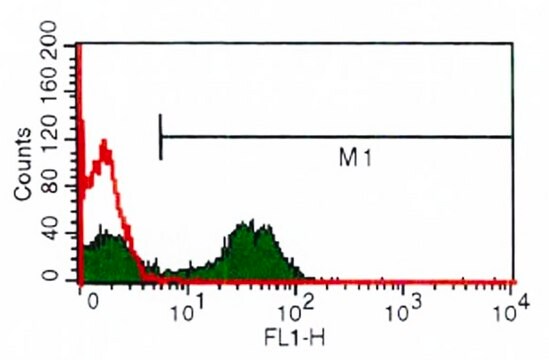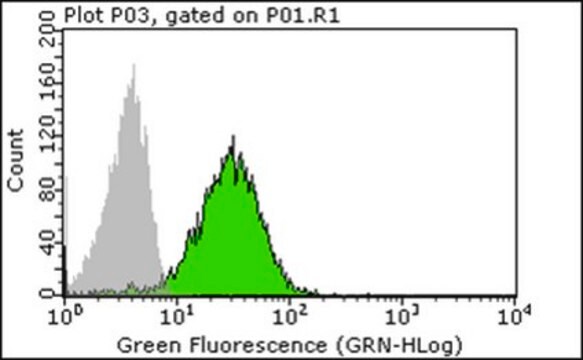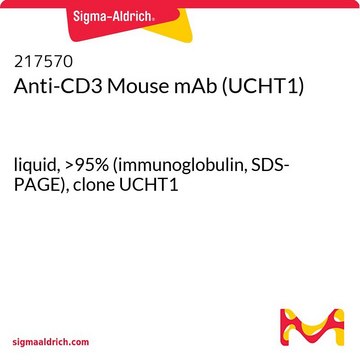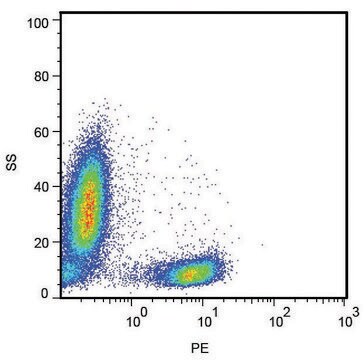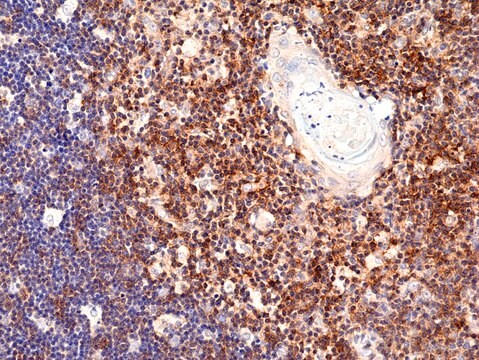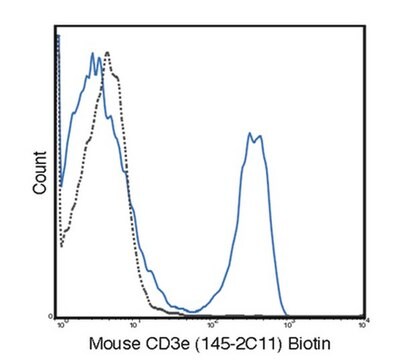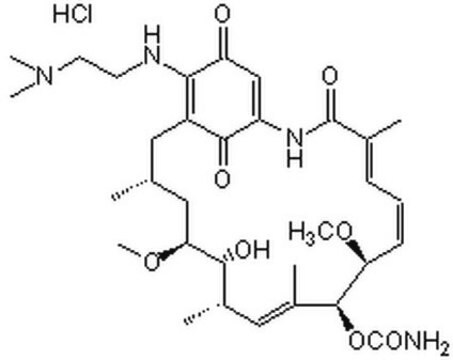MABF2089
Anti-CD28 Antibody, clone 37.51
clone 37.51, from hamster(Syrian)
Synonyme(s) :
T-cell-specific surface glycoprotein CD28
About This Item
Produits recommandés
Source biologique
hamster (Syrian)
Forme d'anticorps
purified antibody
Type de produit anticorps
primary antibodies
Clone
37.51, monoclonal
Espèces réactives
mouse
Conditionnement
antibody small pack of 25 μg
Technique(s)
flow cytometry: suitable
immunoprecipitation (IP): suitable
western blot: suitable
Numéro d'accès NCBI
Numéro d'accès UniProt
Modification post-traductionnelle de la cible
unmodified
Informations sur le gène
mouse ... Cd28(12487)
Description générale
Spécificité
Immunogène
Application
Flow Cytometry Analysis: A representative lot detected CD28 in Flow Cytometry applications (Gross, J.A., et. al. (1992). J Immunol. 149(2):380-8; Krummel, M.F., et. al. (1995). J Exp Med. 1;182(2):459-65).
Immunoprecipitation Analysis: A representative lot detected CD28 in Immunoprecipitation applications (Gross, J.A., et. al. (1992). J Immunol. 149(2):380-8).
Western Blotting Analysis: A representative lot detected CD28 in Western Blotting applications (Gross, J.A., et. al. (1992). J Immunol. 149(2):380-8
Qualité
Flow Cytometry Analysis: 1 µg of this antibody detected CD28 in 1X10E6 EL-4 T lymphoma cells.
Description de la cible
Forme physique
Autres remarques
Not finding the right product?
Try our Outil de sélection de produits.
Code de la classe de stockage
12 - Non Combustible Liquids
Classe de danger pour l'eau (WGK)
WGK 2
Point d'éclair (°F)
Not applicable
Point d'éclair (°C)
Not applicable
Certificats d'analyse (COA)
Recherchez un Certificats d'analyse (COA) en saisissant le numéro de lot du produit. Les numéros de lot figurent sur l'étiquette du produit après les mots "Lot" ou "Batch".
Déjà en possession de ce produit ?
Retrouvez la documentation relative aux produits que vous avez récemment achetés dans la Bibliothèque de documents.
Notre équipe de scientifiques dispose d'une expérience dans tous les secteurs de la recherche, notamment en sciences de la vie, science des matériaux, synthèse chimique, chromatographie, analyse et dans de nombreux autres domaines..
Contacter notre Service technique